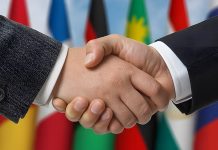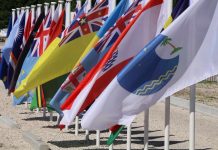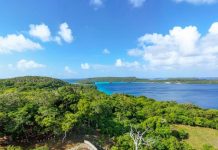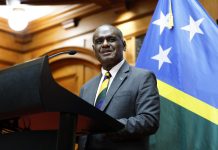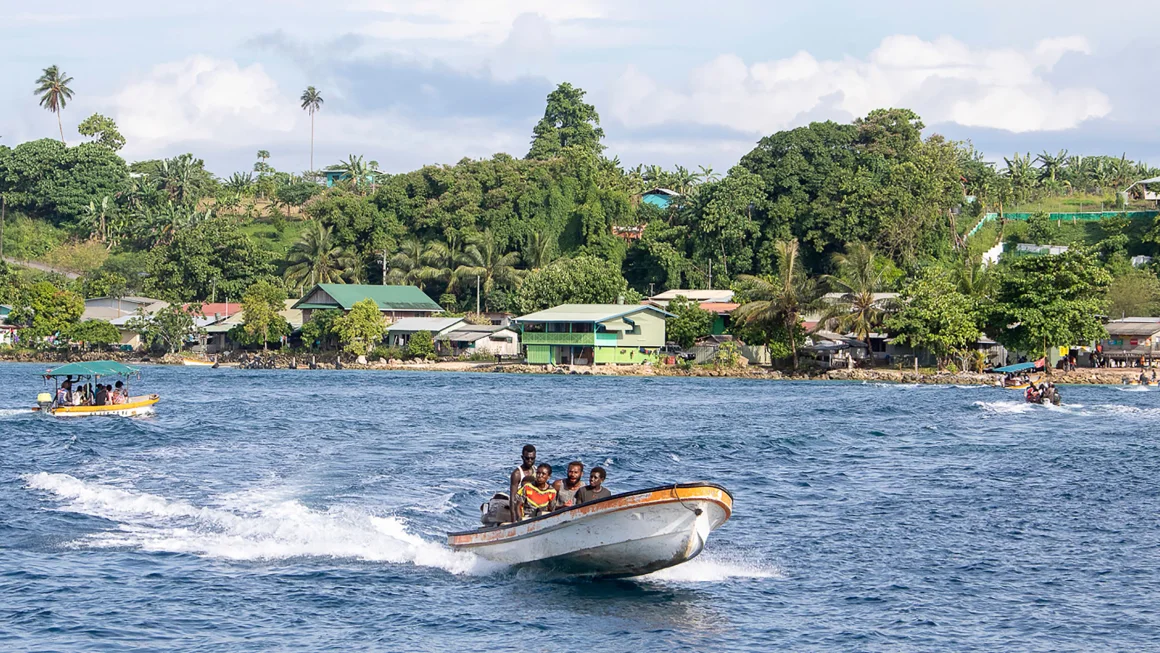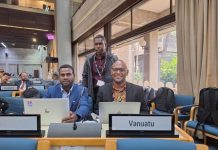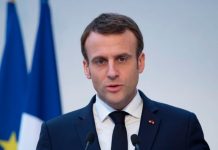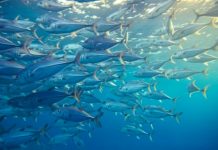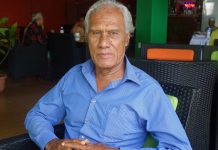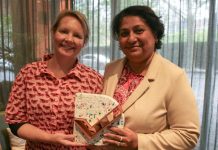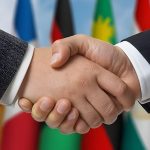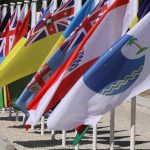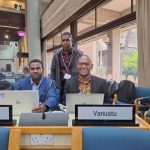By Dr Naihuwo Ahai PhD, Governance and Development Specialist, Buka
It is now 35 years since the Bougainville crisis erupted and 23 years after it officially ended through the signing of the Bougainville Peace Agreement in August 2001. Children in Primary school in 1989 are now in their late 40s or early 50s babysitting grandchildren.
While most physical evidence of the catastrophic era is slowly disappearing and the psychological trauma also slowly dissipating, many still carry the physical scars of the Bougainville Crisis. Some ex-combatants struggle with daily pain from bullets still lodged in their bodies.
Everyday language also helps to perpetuate the impact of the crisis two decades after its’ cessation. Whilst the three RRRs, (restoration, rehabilitation, and reconstruction), have given way to services delivery and development lingo, the continuing use of other crisis induced language, (such as the lost generation, veterans or ex-combatants, Mekamui) indicates a long road still ahead before crisis coined language fades away. The term lost generation was first used in 2005 by the then Department of Veterans Affairs in its Peace Audit Report. The term is slowly losing currency as this category of the population sails out of the limelight as they are now in the late forties and have largely submerged itself into the community.
The veterans or ex-combatants were intended to be integrated back into society, initially through the rehabilitation assistance of the New Zealand Govt, but has been reenergised through the formal institutionalisation of the umbrella entity into the ABG government administrative structures unlike its women counterpart which remains a civil society organisation. Both entities continue to play critical roles in advocacy, governance and development. The Mekamui is a simmering entity that is still exist in Panguna and other remote areas where there is minimal government influence and may in fact be on a resurgence in Konnou in South Bougainville. Interestingly, the term “normalcy” is not commonly spoken now indicating that society has generally moved on and living stable lives.
The colors young men wear in their everyday clothing also indicates the lingering influence of the Crisis with black, brown or army camouflage being the common clothing colors. These colors express emotions of rebelliousness, anger, sadness and nonconformist behaviors. Dread locks popularised by Reggae legend Bob Marley or more recently by South African Lucky Dubae are popular male hair styles while the ‘Red Scar’f or bandana is also commonly worn symbolising rebellion, dissatisfaction or protest. In contrast neighboring Melanesian countries predominantly wear brighter colors displaying a happier and friendly people. Safety boots and mining reflector clothing are also common reflecting a hangover with the mining culture.
The music scene is making an interesting transition from the lamentations of the Crisis period such as the various lyrics and songs about “My island Bougainville” by bands such as the Crisis Survivors of Buka and the Blood Generation of Kieta. The Five Key String band of Torokina made a brief appearance reminiscent of the merrier 1970s and 80s. The Referendum period heard some songs about independence such as that sung by Darutue Primary school or by Pokpok islanders echoing a long arduous human rights journey and that this Referendum, (compared to previous attempts), is for real and urging voters to make their vote count.
More recent lyrics rapper around mundane matters of failed courtships such as “airo ngana kemuroi” or indicating a death of music talent. Heavy metal is still common in Central and South Bougainville whilst in a jolly mood such as at the Rocks Tavern in Arawa. Bambo band continues to flourish in Buka echoing happier times and indicating greater social harmony.
The state of the infrastructure or rather the lack of it in rural areas is a reminder of the impact of the Crisis. Buka is an island of stark contrasts with the east coast boasting electricity, a lengthy sealed road and cement foot paths while the west coast hasn’t seen much improvement since the crisis days. In south and central Bougainville, feeder roads that once used to be frequented by 25 seater Coaster Buses no longer exist while inland bridges have been washed away. Key bridges of Pangara and Tavera rivers on the main highway from Panguna to Nagovisi enroute to Siwai are yet to be rebuilt despite promises by the donor community. Plans have been announced by the Papua New Guinea (PNG) National Government for the sealing of the Aropa to Buin highway and can be interpreted as a peace dividend to the current conflict zone of Konnou apart from the political mileage for the national government.
The 97. 7 percent vote for independence has been on every persons’ lips. “Independence” has become a daily staple with citizens anxiously awaiting the outcomes of the consultation process and many noting the points of contention around the word “nonbinding” which is not found in the Peace Agreement or in Part XIV of the PNG Constitution. The process of “ratifying” or endorsing the referendum result has also become contentious as there are differences in interpretation as well as in the mechanics for tabling it and dealing with it on the floor of PNG Parliament.
As either party stands its grounds, but agree to continue talking, a new set of words have come into everyday use in Bougainville. Both parties have agreed to seek the services of an international moderator to manage a moderated process. A significant change in the process is expected from consultation to negotiation but remains to be seen how vibrant the negotiations will be. A short list of candidates is currently being screened and assessed by the parties. Informed observers sense the moderated negotiation process as a stepping stone into the international diplomacy and human rights arena, thus signaling increased efforts in the international prong of the tripartite independence readiness strategy. The local prong indicates mixed results in Independence Readiness while the national prong is now transiting into the moderated process and may further transition into the international prong which is already in motion as indicated by recent cultural exchange trips to Solomon Islands and Vanuatu.
Overall, the Wabag Road Map, seems to have waned and the key technical body responsible for is strategic direction – the Bougainville Independence Mission Advisory Team (BIMAT), also seems to have slowed down. In the meantime, the term of current ABG government ends next year August and one can bet that independence, economy, good governance, law and order will be the key campaign points. Naïve candidates will still harp about “services delivery” whilst more informed candidates will focus on the economy. “Accountability” is an important agenda but may not appear on the platform of many candidates.
Panguna land owners will be under increasing scrutiny for having initiated and coopted the rest of Bougainville into their agenda using “independence” and “Panguna mine” as the carrot but since then reneged on that front, choosing a more inward monetary agenda. Agriculture and fisheries remain sleeping giants suggesting a need for effective leadership and technical capability. Over 20 large plantations remain run down and dormant under foreign ownership with the government not knowing what to do.
Returning ABG Parliamentarians will certainly be asked to account for the K1m(US$257,000) per Constituency funding which was intended to make each Constituency Independence Ready, which remains loosely defined.
Similar to PNGs’ earlier planning history, planning for Bougainville followed five-year cycles which didn’t enable much forward planning. PNG Vision 2050 was launched 34 years after gaining independence. The African group of nations with a longer history of colonization and independence, have recently launched Agenda 2063 setting their collective 40-year vision.
In comparison, Bougainville has done well by already launching its’ 30-year Long-term Vision 2052 on the eve of independence which is “no earlier than 2025 and no later than 2027” but will require consistent commitment across the broader society to cultivate the new nation it envisages. Bougainville’s political journey may be at the cross roads but its future vision has already been mapped out. This future envisions Bougainville to be “a high income, educated, healthy, peaceful Christian sovereign nation”.


